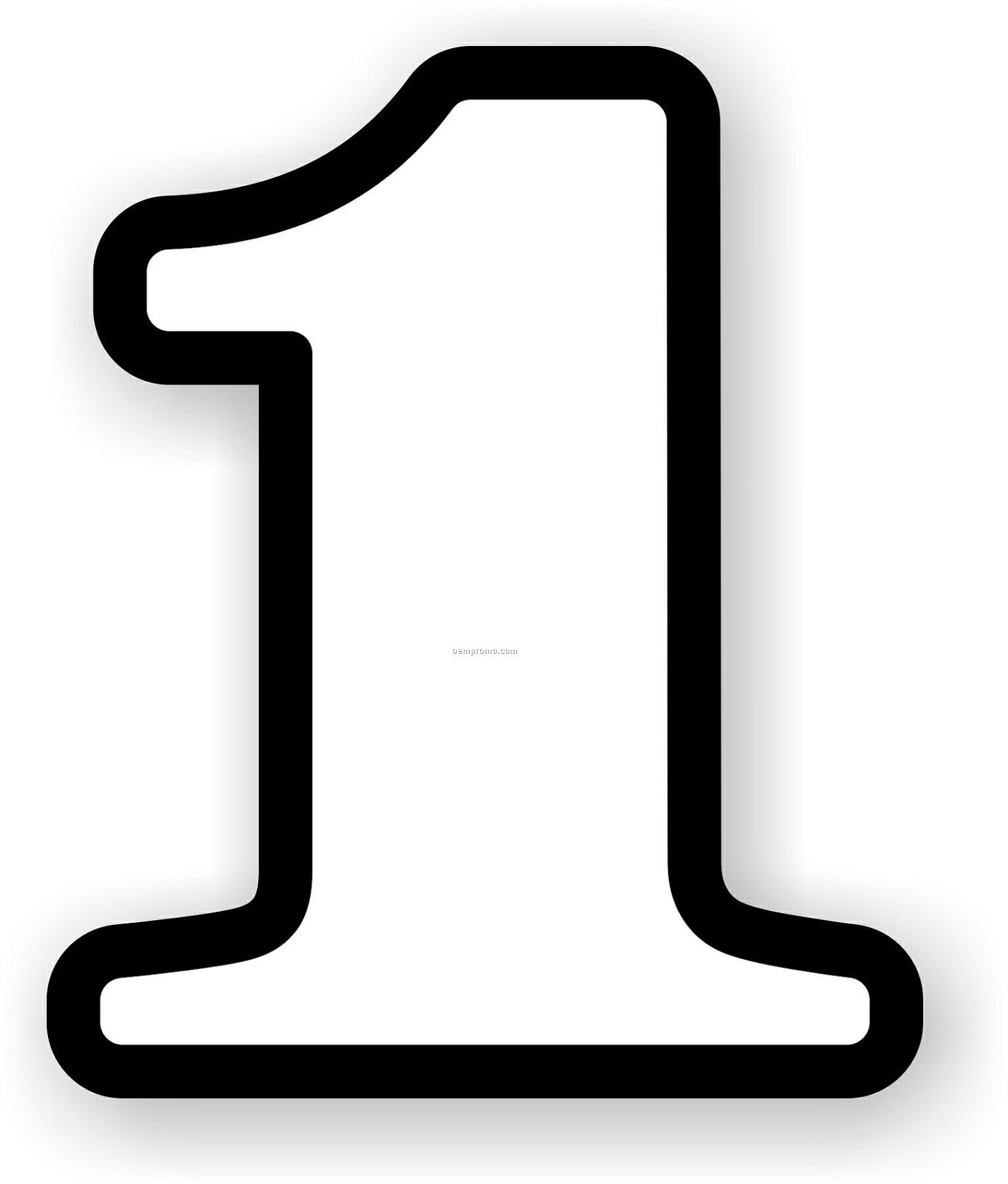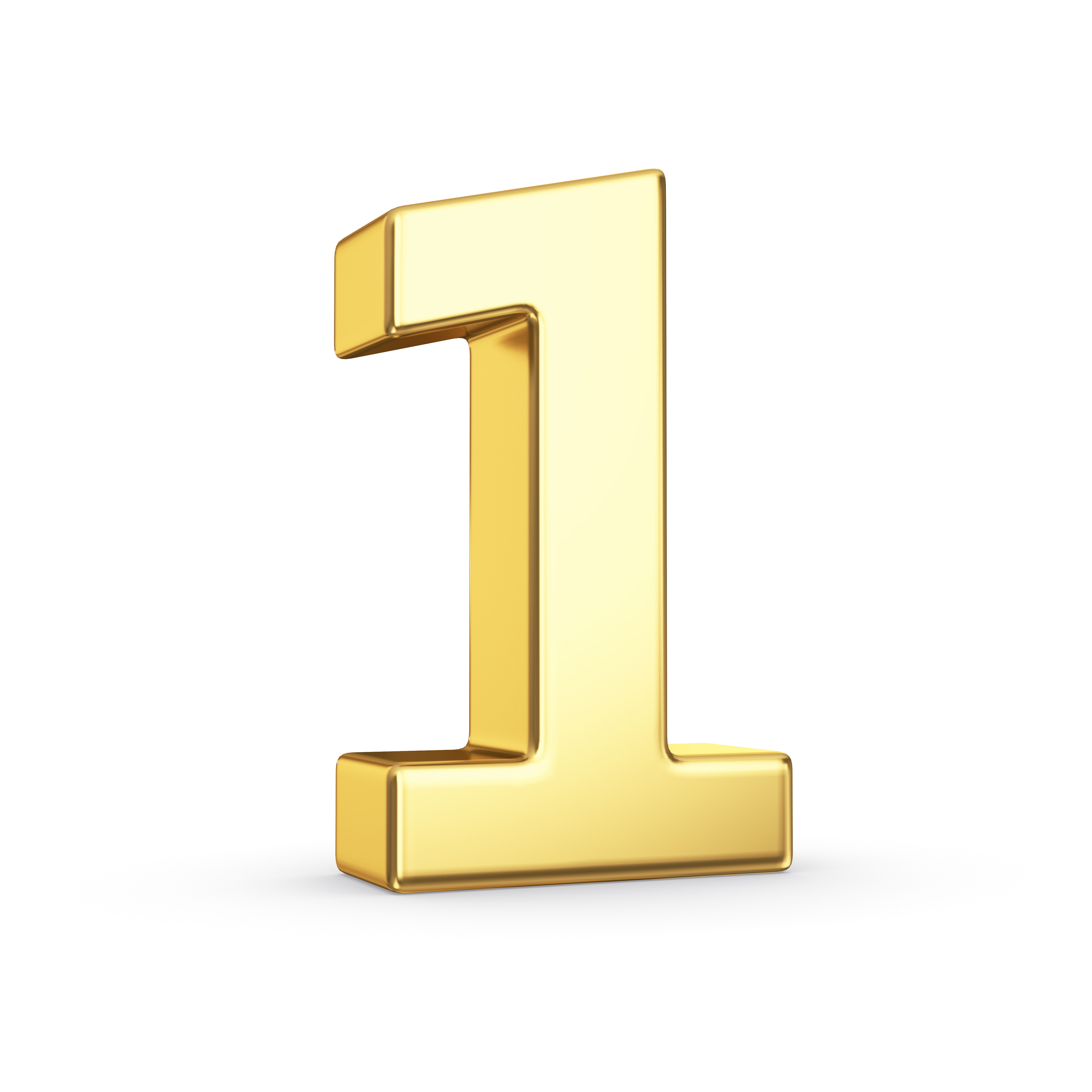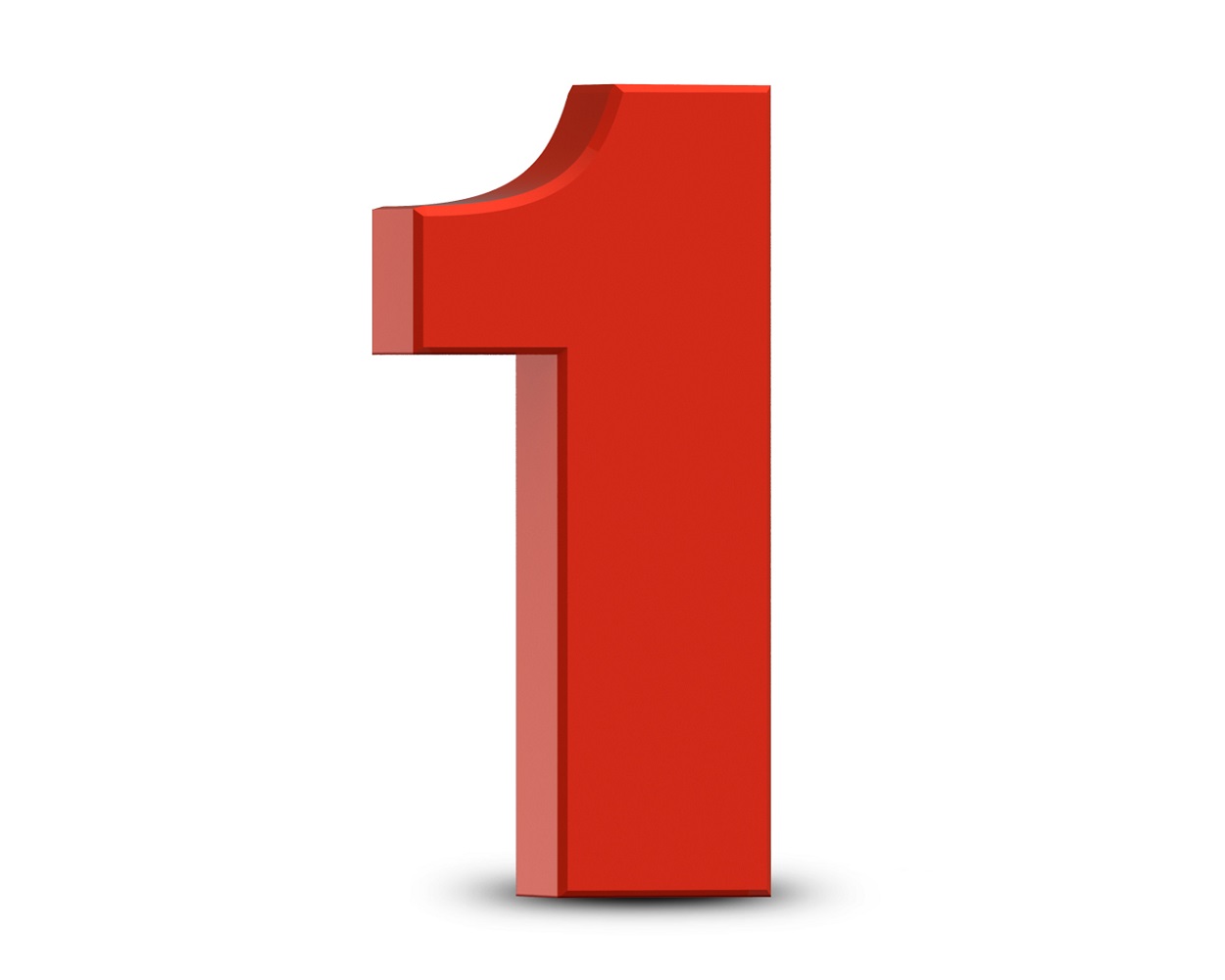A 1 Way Frank View: Exploring The Singular Nature Of Number One
You know, it's pretty interesting how something so basic, so fundamental, can hold such a big place in our world. We're talking about the number one, that very first digit we learn, and its far-reaching presence. This piece takes a 1 way frank approach, offering a direct, uncomplicated look at what makes this number so unique, and honestly, how it pops up in places you might not even expect, so it's a bit of a journey.
When we consider "1 way frank," we're really getting into the core, the straight path to understanding the essence of this single, powerful unit. It’s about seeing number one for what it is: a foundational element, a starting point, and a marker of singularity across so many different areas. This isn't just about counting; it's about the very concept of being first, being singular, and being the building block for everything else, that.
From the earliest lessons we get as children to complex ideas in mathematics and even the details of modern technology, the number one is there, often playing a surprisingly central part. It's a rather constant presence, and this exploration aims to show you just how widely its influence stretches, giving you, like your, a clearer picture of its importance.
Table of Contents
- The Fundamental Core of One
- One's Unique Mathematical Identity
- Learning One: A First Step
- One in the Digital and Physical World
- Frequently Asked Questions About Number One
The Fundamental Core of One
When you think about it, the number one, often just called "one" or "unity," is more than just a simple count. It's a numeral, a symbol, and a picture, that, used to show a single thing. It holds a very special spot, being the first and smallest positive whole number in that never-ending string of natural numbers we all know. It’s pretty much where everything starts, in a way, when you’re counting up from nothing.
The symbol we use today for the number 1, that straight up-and-down line, often with a little cap on top and sometimes a small horizontal line at the bottom, has quite a history. Its origins go way back, showing how people have, for a very long time, found a simple way to represent just one item. It’s a very direct representation, almost like a single stick, so it’s easy to grasp.
It’s truly the beginning point for so much. Whether you're talking about putting things in order or just recognizing a single object, one is the reference. It's the unit, the individual piece that helps us build up bigger ideas and bigger numbers, too it's almost. This singular nature makes it incredibly powerful, arguably the most important number to grasp right from the start.
You see it in pretty much every system of counting, universally recognized. That straight line is, basically, a clear signal for "just one." It’s rather straightforward, which helps it to be so effective across different cultures and languages. This foundational role is what makes it such a constant, you know, in our mathematical lives.
One's Unique Mathematical Identity
In the world of mathematics, one truly has a distinct personality, a very unique role. It's known as the multiplicative identity, which sounds a bit fancy, but it just means that if you take any number and multiply it by one, the number stays exactly the same. So, for example, five times one is still five, and a million times one is still a million. It’s rather simple, but incredibly important for how numbers behave.
For a long time, people used to think of one as a prime number. However, these days, it really gets special treatment in lots of definitions and uses that involve prime numbers, especially those that are bigger than or equal to two. It's almost like it has its own category because it behaves a little differently from the other primes, which is that, quite interesting.
It's also, as we touched on, the smallest positive whole number and the smallest natural number. This position as the absolute minimum positive whole value gives it a unique kind of significance. It’s the first step on the number line, moving away from zero, and it sets the stage for everything that follows, basically.
You can see its influence in sequences too. Consider something like one-eighth, one-quarter, three-eighths, one-half, and so on. This is an arithmetic sequence, and the reason it works is that there’s a consistent difference between each step. In this particular case, you’re just adding one-eighth to the previous number each time. One-eighth, you know, is still built upon the concept of one, divided into parts.
And then there's a bit of a mathematical curiosity with one. If you look at the sum of one over one, plus one over two, plus one over three, and so on, up to one over 'n', it turns out that this sum keeps growing and growing without any upper limit. It’s, in some respects, a very simple series, but it shows how even with one as the numerator, when you keep adding these fractions, the total can get incredibly large, never settling down. This is actually shown by the fact that the natural logarithm of 'n plus one' is less than this sum, and that logarithm goes to infinity as 'n' gets huge, which is, quite a thought.
The Roman numeral for one is also rather simple, just a single letter 'i'. It’s a very direct way to represent that singular quantity, very much like the vertical line we use today. This shows, arguably, a long-standing human inclination to use a straightforward symbol for this most basic of numbers.
Learning One: A First Step
For our littlest learners, getting to know the number one is, truly, a big moment. There are educational videos specifically made for children to help them get a handle on this first number. These videos make it fun, which is very important for young minds, so they can actually connect with the idea.
These learning tools often show children how to draw the number 1, that simple vertical line. This tracing helps them physically understand the shape and connect it to the idea of "one." It’s a very hands-on way to begin their journey with numbers, you know, making it quite memorable.
Beyond just writing it, these lessons also teach how to say "one" out loud, getting the pronunciation just right. And then, crucially, they move on to counting with super fun examples. Imagine counting one apple, or one toy car; these simple, engaging scenarios help children truly grasp what "one" means in the real world. It’s, in a way, the very first step in building their mathematical understanding, a really big deal for them.
This early exposure to one, through these engaging and practical methods, builds a very strong foundation. It’s about more than just memorizing a symbol; it’s about understanding the concept of singularity and how it applies to the things around us. This initial grasp of one, it basically sets the stage for all future numerical learning, which is, quite important for a child’s development.
One in the Digital and Physical World
It's fascinating how the concept of "one" or "first" shows up in so many different aspects of our modern lives, especially in technology and everyday practicalities. Take, for example, the rankings for desktop computer processors. You'll often see charts, like those CPU performance ladder diagrams, that give you the latest rankings and comparison details. These charts help people understand how different models perform and choose what's right for them. When you're looking at these, the "one" position, the top spot, is always the one everyone wants to know about, basically, the best performer.
Then there's the world of mobile technology. Some of the very latest phones feature a "1-inch LYT-900 main camera sensor." This is a big deal for picture quality, especially in low light. That "1-inch" designation, you know, highlights a specific, premium size for the camera's main component. It's often paired with other advanced features, like a 200-megapixel periscope telephoto lens, which also aims for top-tier night photography. And some phones even have dual battery setups, like a 6000mAh main battery and a 2000mAh external one, where the 6000mAh is, arguably, the primary or "one" main power source.
Even in the online world, the number one plays a part. Zhihu, for instance, a very high-quality question-and-answer community and content platform in Chinese, officially launched in January 2011. That "January 1" or "first month" is a key part of its history, marking its beginning. It's about sharing knowledge and finding answers, and that launch date is, basically, its very first step.
Looking ahead to the future, there are guides, like the 2025 traffic card selection guide, which aim to help people pick the best value data plans. These guides often highlight the "one" best option or the primary recommendations for those who find it hard to choose. They're, in a way, about finding that single, most cost-effective choice for the year, which is quite helpful for consumers, especially now when traffic card prices are, apparently, at their lowest point for the whole year.
And consider the integrated graphics chips in computers, like Intel HD Graphics. The Chinese meaning of that name suggests it's the integrated graphics card built into the Intel chip. These are typically entry-level, sometimes called "point-and-light" machines, meaning they're just good enough to get the display working. They're often the "one" built-in graphics solution for basic tasks, not for heavy gaming, so they're a very primary, fundamental component for many everyday computers.
Even in the kitchen, "one" can be a theme. Many people struggle with what to make for dinner, and while takeout is easy, the hygiene can be a worry. So, cooking at home is often preferred, but people want it simple. There are collections of recipes, like a very practical set of 400 common home-cooked dishes. This might represent "one" comprehensive guide, or the primary collection of recipes for easy, balanced meals. It's about finding that single, go-to resource for everyday cooking, which is, quite useful, honestly, for planning meals.
In all these examples, whether it's the top spot in a ranking, a specific component size, a launch date, a primary guide, or a basic integrated part, the idea of "one" or "first" consistently appears. It shows how this number, or the concept it represents, is, basically, woven into the fabric of our technological and daily existence, often signifying something foundational or a singular focus.
Frequently Asked Questions About Number One
Here are some common questions people often have about the number one:
Is the number 1 a prime number?
You know, it's a bit of a special case. While the number one used to be thought of as a prime number, it actually needs very specific handling in many definitions and uses that involve primes. Most of the time, when we talk about prime numbers, we're thinking about those that are greater than or equal to two. So, in modern mathematics, one is generally not considered a prime number; it’s, basically, in its own category, which is, quite interesting.
What is the significance of the number 1?
The number one has a lot of meaning, really. It's the first and smallest positive whole number, making it the very start of the natural numbers. It's also the multiplicative identity, meaning any number multiplied by one stays the same. Beyond math, it often stands for unity, singularity, or being the first, like in rankings or beginnings. It’s, in a way, a symbol of origin and individuality, so it’s pretty significant across many areas.
How is the number 1 used in math?
One is used in countless ways in mathematics. It's the base for counting, the start of sequences, and a key part of fractions. As the multiplicative identity, it helps keep equations balanced. It’s also present in more complex ideas, like in series where sums can grow infinitely, or in defining number properties. It's, basically, a constant presence, a fundamental building block for almost every mathematical concept you can think of, you know, from simple arithmetic to advanced calculus.
You can learn more about numbers and their properties on our site. And to really get into the details of how numbers work, check out this page our mathematical insights.
- Willowbrook Mall Appletore
- Amc Independence Commons 20 Theater
- Tnt Broadcast Tonight
- Dodgercore Today
- Temperature For Medium Rareteak

Picture of Number 1 Printable | Activity Shelter

Pictures of Number 1 for Kids | Activity Shelter

Pictures of Number 1 for Kids | Activity Shelter